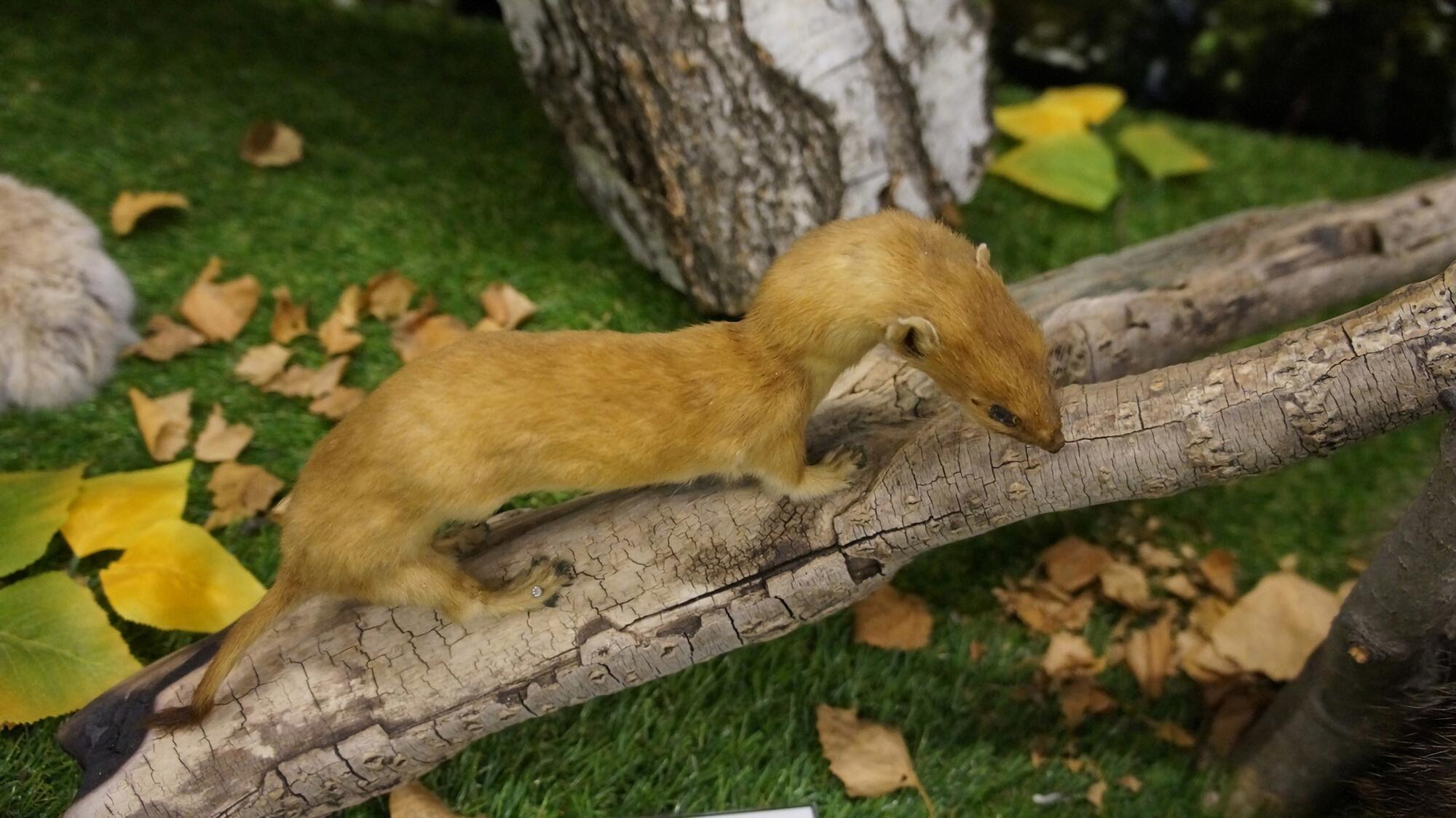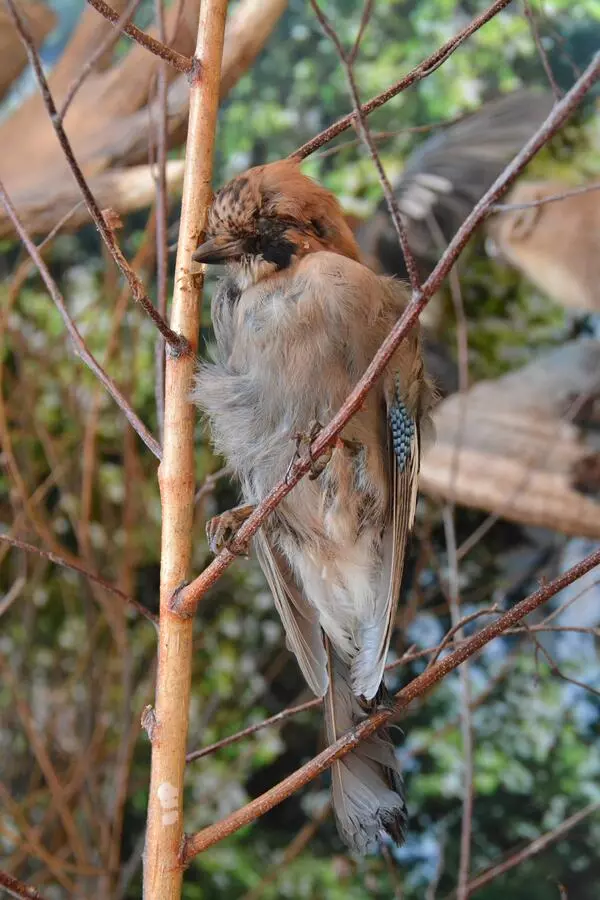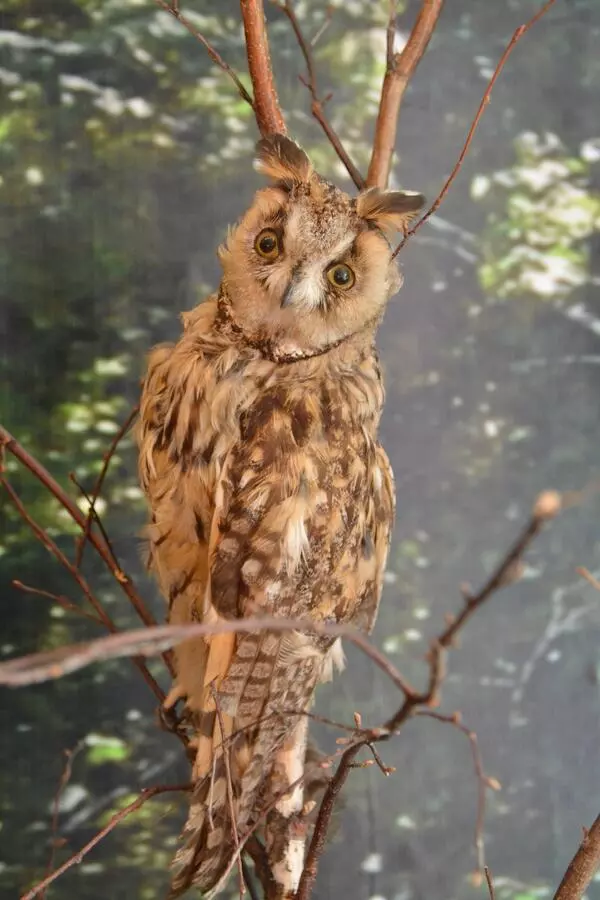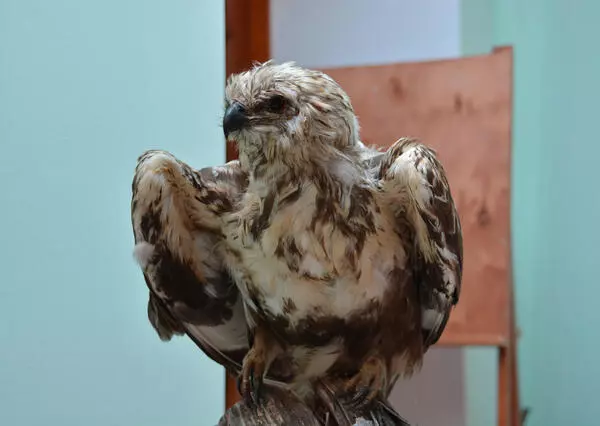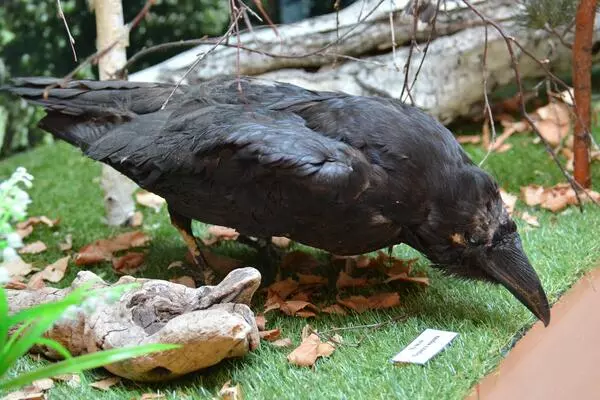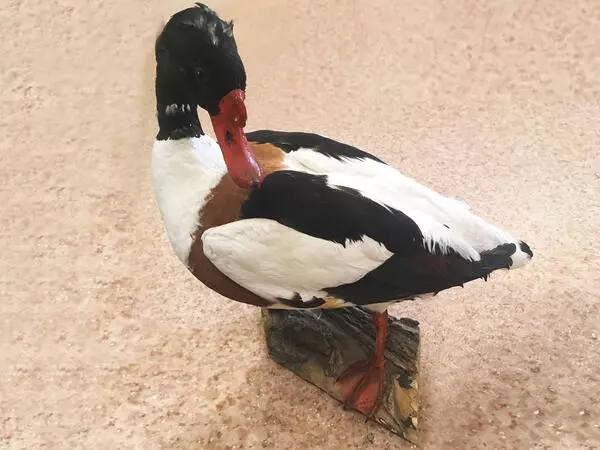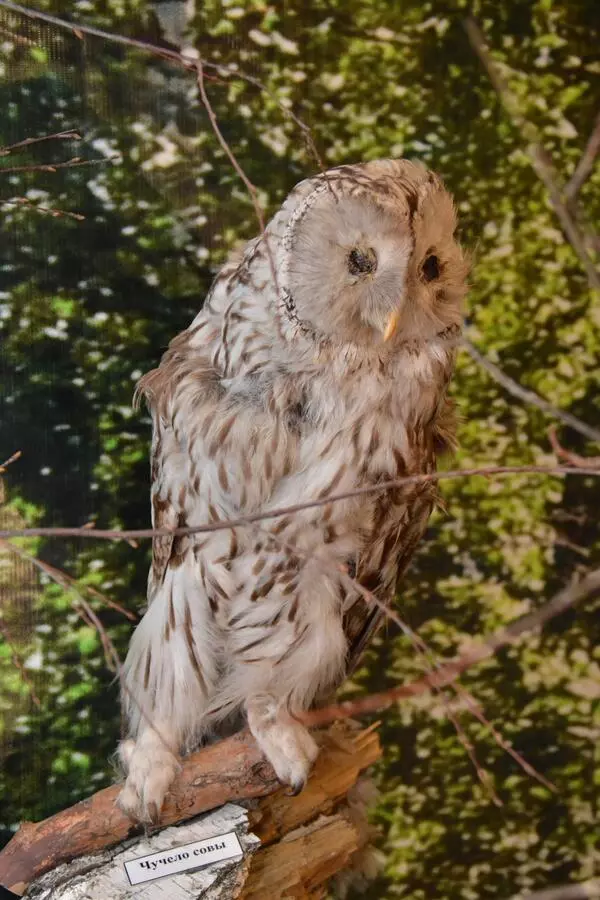The least weasel is a small carnIvorous mUstelid. The animal has a long and supply body, short legs with sharp claws, an elongated head, small round ears, and a slightly split nose. In summer, the least weasel’s coat is double-colored with the upper parts and legs tawny brown and lower parts white. Its winter coat is all white.
The least weasel is very agile and nimble. It moves in jumps covering 25 to 30 cm and runs quickly, swims, and climbs well. It is extremely bold and aggressive. The least weasel poses a grave danger to all small animals as it preys on field and wood mice, shrews, rats, moles, young rabbits, chicks, pigeons, as well as on lizards, grass snakes, frogs, and even vipers. Unless hunted, the least weasel preys both by day and by night. Its small size allows it to pursue its prey right in their tunnels.
A few years ago, the world saw a picture taken at the London Zoo. The author managed to capture a green woodpecker flying up with a least weasel on its back. The weasel attacked the bird but botched the attempt because of the people who happened to be nearby.
The least weasel likes horse sweat and sometimes attacks horses in stables. It confuses and braids their mane and tails and tickles them nearly to death. To protect horses from the weasel, grooms use the well-tried trick: they keep a goat in the stable because the least weasel hates its smell.
The least weasel digs no burrows, preferring to use various dens and shelters made by other animals. The least weasel is a silent creature, but it can hiss when alarmed or angry. When attacking, it chirps and shrieks. The least weasel mates all year round. Typically, five to seven cubs are born. The mother protects them and moves them to another location once she senses danger. The least weasel can live up to five years in the wild, but its average lifespan does not exceed a year.
In Ancient Rome and Early Medieval Europe, the weasel—along with the marten—was kept as a pet because it preys on mice. However, it is hard to tame, and when the brown rat appeared, the weasel often failed to cope with it, so people started to use other animals, such as ferrets and cats, to protect food storages.
The least weasel is very agile and nimble. It moves in jumps covering 25 to 30 cm and runs quickly, swims, and climbs well. It is extremely bold and aggressive. The least weasel poses a grave danger to all small animals as it preys on field and wood mice, shrews, rats, moles, young rabbits, chicks, pigeons, as well as on lizards, grass snakes, frogs, and even vipers. Unless hunted, the least weasel preys both by day and by night. Its small size allows it to pursue its prey right in their tunnels.
A few years ago, the world saw a picture taken at the London Zoo. The author managed to capture a green woodpecker flying up with a least weasel on its back. The weasel attacked the bird but botched the attempt because of the people who happened to be nearby.
The least weasel likes horse sweat and sometimes attacks horses in stables. It confuses and braids their mane and tails and tickles them nearly to death. To protect horses from the weasel, grooms use the well-tried trick: they keep a goat in the stable because the least weasel hates its smell.
The least weasel digs no burrows, preferring to use various dens and shelters made by other animals. The least weasel is a silent creature, but it can hiss when alarmed or angry. When attacking, it chirps and shrieks. The least weasel mates all year round. Typically, five to seven cubs are born. The mother protects them and moves them to another location once she senses danger. The least weasel can live up to five years in the wild, but its average lifespan does not exceed a year.
In Ancient Rome and Early Medieval Europe, the weasel—along with the marten—was kept as a pet because it preys on mice. However, it is hard to tame, and when the brown rat appeared, the weasel often failed to cope with it, so people started to use other animals, such as ferrets and cats, to protect food storages.
